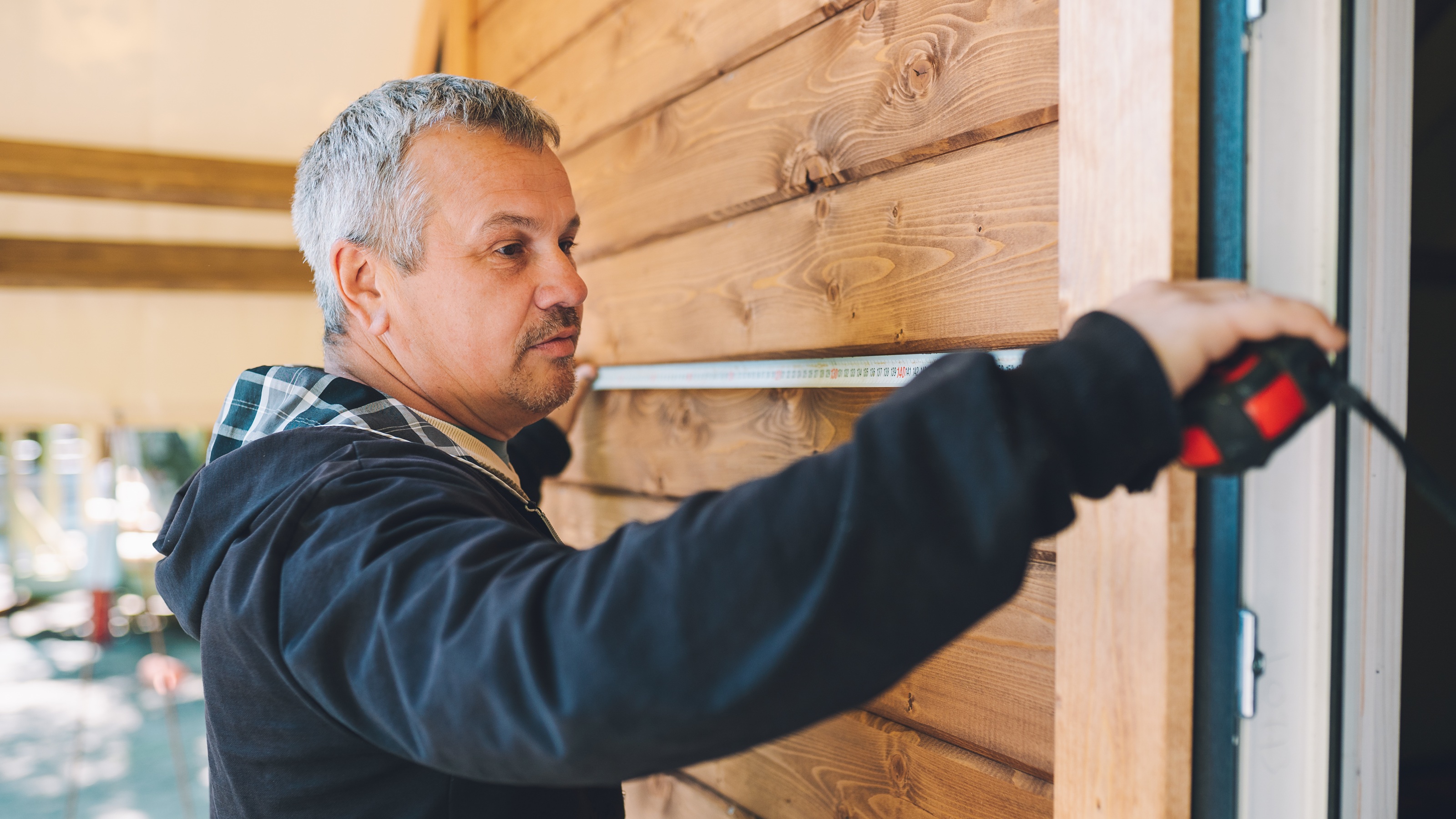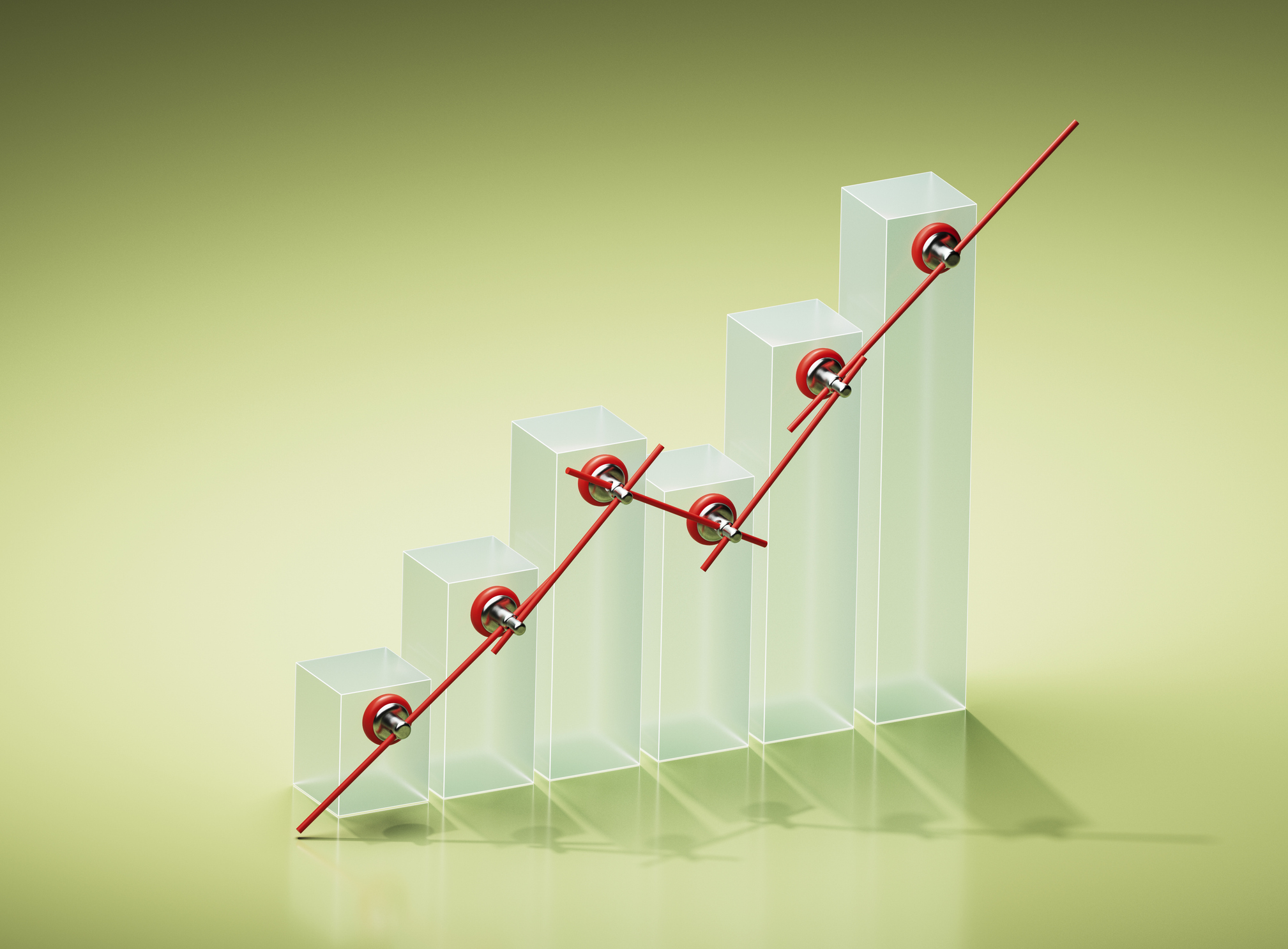Take It From a Tax Expert: The True Measure of Your Retirement Readiness Isn't the Size of Your Nest Egg
A sizable nest egg is a good start, but your plan should include two to five years of basic expenses in conservative, liquid accounts as a buffer against market volatility, inflation and taxes.


When clients first walk into my office, they often ask the wrong question: "Have I saved enough money to retire?" The real question is, "Will I outlive my income?"
A retirement portfolio that looks impressive on paper can still fail if it isn't structured to deliver steady, tax-efficient income over decades.
Inflation, market volatility, rising health care costs and taxes all threaten to erode those dollars. That's why I tell clients that the true measure of retirement readiness isn't the size of your nest egg, it's whether you've engineered a paycheck that lasts as long as you do.
From just $107.88 $24.99 for Kiplinger Personal Finance
Become a smarter, better informed investor. Subscribe from just $107.88 $24.99, plus get up to 4 Special Issues

Sign up for Kiplinger’s Free Newsletters
Profit and prosper with the best of expert advice on investing, taxes, retirement, personal finance and more - straight to your e-mail.
Profit and prosper with the best of expert advice - straight to your e-mail.
Kiplinger's Adviser Intel, formerly known as Building Wealth, is a curated network of trusted financial professionals who share expert insights on wealth building and preservation. Contributors, including fiduciary financial planners, wealth managers, CEOs and attorneys, provide actionable advice about retirement planning, estate planning, tax strategies and more. Experts are invited to contribute and do not pay to be included, so you can trust their advice is honest and valuable.
Sequence of returns can make or break your retirement
Most people assume that an "average" return is what matters in retirement. If your portfolio averages 6% a year over 25 years, it seems as if you should be fine. But retirement income doesn't play out on averages; it plays out on timing.
Think of your portfolio like an airplane taking off. The most dangerous part of the journey isn't cruising at 30,000 feet — it's the runway. If you hit turbulence right after leaving the ground, the plane struggles to gain altitude.
Likewise, if you experience major losses in the first few years of retirement while also pulling money out, your savings might never recover enough lift to carry you through the decades ahead.
I've seen it happen. Two retirees with identical portfolios and identical average returns can end up in very different places depending on whether their bad years came early or late. That's the sequence of returns risk, and it can quietly undo even the most diligent saver.
How do you protect yourself? I encourage clients to build what I call an income runway: two to five years of essential expenses set aside in conservative, liquid investments such as high-quality bonds, short-term Treasuries or insured CDs.
That money becomes your buffer during market downturns and allows your long-term investments time to recover.
Here are three steps you can take:
- Calculate your essentials. Write down your nonnegotiable monthly expenses such as housing, groceries, utilities and health care. Multiply that number by 24 to 60 months. That's the size of your runway.
- Segment your assets. Keep this runway in accounts that are safe and accessible, not in the same pool as your long-term investments.
- Commit to the discipline. When markets drop, use your runway to cover living expenses instead of selling growth assets at a loss. Replenish the runway during stronger market years.
A well-built runway does more than help you survive downturns. It helps you stay calm when turbulence hits. Instead of fearing the next market dip, you know you've already set aside the resources to ride it out.
Don't let taxes shrink your paycheck
When most people think about retirement risks, they picture market downturns or unexpected health expenses. Yet, taxes often take just as big a bite out of income. Required minimum distributions (RMDs), the taxation of Social Security benefits, and Medicare surcharges known as IRMAA can quickly erode what many retirees assume will be safe money.
Think of taxes as a slow leak in your retirement bucket. Even if you have enough assets, the leak can drain your income faster than you expect unless you patch it early. I often discuss with my clients how they can:
Make use of Roth conversions. If you have a window of lower-income years before RMDs begin at age 73, converting a portion of traditional IRA assets to Roth can lock in tax-free growth and reduce future taxable income.
Sequence withdrawals with intention. Rather than pulling equally from taxable, tax-deferred, and Roth accounts, coordinate the order of withdrawals to manage your tax brackets efficiently. This can help you avoid being pushed into higher brackets unnecessarily.
Give smarter. If charitable giving is important to you, consider making qualified charitable distributions (QCDs) directly from your IRA once you turn 70½. These withdrawals do not count as taxable income, and they can satisfy part or all of your RMD.
The real goal is not simply to pay fewer taxes today. It's to design a tax strategy that stretches the life of your retirement income over decades. By being intentional, you keep more of your savings working for you instead of handing it to the IRS.
Inflation and longevity risk: The silent threats
Inflation and longevity are like two silent forces pressing in from opposite sides. On one hand, inflation gradually eats away at the purchasing power of every dollar. On the other hand, longer life expectancies mean those dollars stretch further than ever before. Together, they create what I call the "retirement must squeeze."
Looking for expert tips to grow and preserve your wealth? Sign up for Adviser Intel (formerly known as Building Wealth), our free, twice-weekly newsletter.
Consider this: With just 3% annual inflation, the cost of living doubles in about 24 years. A retiree living on a fixed $60,000 annual income would need roughly $120,000 at age 89 just to maintain the same standard of living they had at 65.
At the same time, more people today are living into their 90s, and some into their 100s. The risk of outliving your money is no longer theoretical. It's a reality I see clients worrying about every day.
Here's what I recommend to counter these pressures:
Keep some assets growth-oriented. It might feel safer to shift heavily into conservative investments once you retire, but being too cautious can actually increase your risk of running out of money. Keeping a portion of your portfolio in equities or other growth assets helps your income rise with inflation over time.
Blend in lifetime guarantees. Tools such as annuities with inflation riders or pensions with cost-of-living adjustments can help ensure your essential income rises alongside expenses. This provides a steady foundation that lasts for life.
Update your plan regularly. A strategy that worked at 65 might not be sufficient at 75 or 85. Review your income plan every few years and adjust for changes in inflation, health care costs or life expectancy.
Retirement can last three decades or more. Building in protection against the slow creep of inflation and the very real possibility of longevity is not optional. It is central to making sure your money lasts as long as you do.
Don't let fear drive your decisions: Balance and stress-testing matter
One of the biggest risks in retirement isn't market volatility, but human behavior. After decades of saving, many retirees retreat too heavily into bonds, CDs or cash once they stop working. While this feels safe, being overly conservative increases the risk of outliving your money as inflation steadily erodes purchasing power.
The solution is balance: Use conservative income sources to cover essentials while keeping a portion of your assets growth-oriented to help offset rising costs over time.
Just as important is stress-testing your plan. Ask yourself:
- How would my income hold up if markets fell 20% early in retirement?
- What if inflation stays higher than expected?
- What if I live 10 years longer than planned?
Testing your plan against these scenarios shows whether your income is durable. If the results reveal weaknesses, you can adjust early rather than react in crisis.
Confidence in retirement comes not from avoiding risk altogether, but from building a plan that is prepared for it.
The bottom line
Retirement success is not about hitting a magic number on a statement. It's about whether your income strategy can weather turbulence, taxes, inflation and the reality of living longer than past generations.
I tell clients that the first step toward real financial security is shifting the question. Instead of asking, "Did I save enough?" ask, "Will my income last as long as I do?"
Once you begin to frame retirement around paychecks rather than balances, you can focus on what really matters: Designing an income plan that adapts, protects, and endures.
Michael Alimo is the President of USA Financial & Tax Services, LLC, a registered investment advisor. Information provided is not a solicitation or recommendation of any investment strategy. Investments and/or investment strategies involve risk including the possible loss of principal. There is no assurance that any investment strategy will achieve its objectives.
Related Content
- Tactical Roth Conversions: Why 2025-2028 Is a Critical Window for Retirees
- Longevity Illustrator: Find Out How Long You Might Live
- Is 100 the New 70?
- Retirement Calculator: How Much Do You Need to Retire?
- I'm a Financial Professional: This Is the Roth Conversion Mistake Too Many People Make
Profit and prosper with the best of Kiplinger's advice on investing, taxes, retirement, personal finance and much more. Delivered daily. Enter your email in the box and click Sign Me Up.

Michael and his team have created a circle of advisers to serve all your retirement needs. In addition to planning for your retirement income and insurance needs, he partners with CPAs and estate planning attorneys to provide a full overview of everything needed in your retirement plan. They all have a seat at the table to talk about your plan. Michael’s approach is built on experience. He has been in the financial industry since 1984, and he founded his firm in 2000. Michael studied finance and accounting at the New York Institute of Technology, and he has passed the Series 7 and 65 securities exams.
-
 Vesting, Catch-Ups and Roths: The 401(k) Knowledge Quiz
Vesting, Catch-Ups and Roths: The 401(k) Knowledge QuizQuiz Test your understanding of key 401(k) concepts with our quick quiz.
-
 Why You Should Pay Attention to Company Guidance
Why You Should Pay Attention to Company GuidanceUnderstanding how corporate profit forecasts affect analysts’ estimates and stock ratings can help you make investment decisions.
-
 How to Protect Yourself and Others From a Troubled Adult Child
How to Protect Yourself and Others From a Troubled Adult ChildThis case of a violent adult son whose parents are in denial is an example of the extreme risks some parents face if they neglect essential safety precautions.
-
 Vesting, Catch-Ups and Roths: The 401(k) Knowledge Quiz
Vesting, Catch-Ups and Roths: The 401(k) Knowledge QuizQuiz Test your understanding of key 401(k) concepts with our quick quiz.
-
 Why You Should Pay Attention to Company Guidance
Why You Should Pay Attention to Company GuidanceUnderstanding how corporate profit forecasts affect analysts’ estimates and stock ratings can help you make investment decisions.
-
 How to Protect Yourself and Others From a Troubled Adult Child: A Lesson from Real Life
How to Protect Yourself and Others From a Troubled Adult Child: A Lesson from Real LifeThis case of a violent adult son whose parents are in denial is an example of the extreme risks some parents face if they neglect essential safety precautions.
-
 To Build Client Relationships That Last, Embrace Simplicity
To Build Client Relationships That Last, Embrace SimplicityAs more automation becomes the norm, you can distinguish yourself as a financial professional by using technology wisely and prioritizing personal touches.
-
 Client Demand Is Forcing Financial Advisers to Specialize: How to Deliver
Client Demand Is Forcing Financial Advisers to Specialize: How to DeliverThe complexity of wealthy clients' needs — combined with AI and consumer demand — suggests the future of financial planning belongs to specialized experts.
-
 Stocks Rise to the Spirit of the Season: Stock Market Today
Stocks Rise to the Spirit of the Season: Stock Market TodayInvestors, traders and speculators are beginning to like the looks of a potential year-end rally.
-
 The 2026 Retirement Catch-Up Curveball: What High Earners Over 50 Need to Know Now
The 2026 Retirement Catch-Up Curveball: What High Earners Over 50 Need to Know NowUnlock the secrets of the 2026 retirement catch-up provisions: A must-read for high earners aged 50 and above.
-
 A Financial Planner Takes a Deep Dive Into How Charitable Trusts Benefit You and Your Favorite Charities
A Financial Planner Takes a Deep Dive Into How Charitable Trusts Benefit You and Your Favorite CharitiesThese dual-purpose tools let affluent families combine philanthropic goals with advanced tax planning to generate income, reduce estate taxes and preserve wealth.